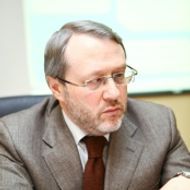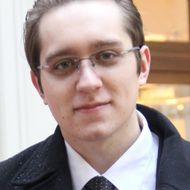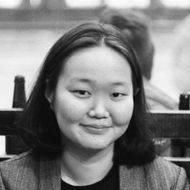HSE Institute for Statistical Studies and Economics of Knowledge presents the third issue of the global scoring megacities by their innovation attractiveness — HSE Global Cities Innovation Index 2024 (HSE GCII 2024) showcasing the new wave of studying the competitive advantages of cities with the highest concentration of leaders in science, high tech, and creative industries. For the first time, the ranking will include over a thousand localities.
About the study
From time immemorial, the city was a focal point of talent where business, intellectual, and creative activity converged and created advanced knowledge, disruptive technologies, avant-garde cultural trends, modern artefacts, and cutting-edge infrastructure. It is namely talents, many of whom are actively looking for the best location to unlock their full potential, that in many ways outline the contours on a rather dynamic global map of high tech and creativity.
The main megacities are perpetually breaking records in the number of attracted startups, high-tech corporations, developers of popular computer games, the number of highly cited researchers, most-streamed artists, and the most influential people in contemporary art. At the same time, there are new points of attraction that appear alongside the increasingly attractive megacities. On the one hand, Asian megacities are strengthening their positions through impressive growth in the number of unicorn companies, patent applications, and scientific publications, driven by the attraction of highly cited researchers and leaders in fashion, gaming, advertising, industrial design, architecture, and the arts. On the other hand, Western university towns (small or medium-sized cities in Europe and the United States that grew around internationally recognised universities) have the highest concentration of innovation economy leaders per capita.
To form a comprehensive view of the innovation structure of the city, the authors of the HSE GCII have studied all participants of the innovation economy down to specific institutions and outstanding individuals. The study results may work as a practical guide, for example for mayors, who are in the global race for innovators, tech investors and entrepreneurs, and for the talent itself — who is looking for new ways to grow, partner, and advance their career.
Methodology
HSE GCII 2024 collected information about 3,536 unique localities from 144 countries of the world, where 27,925 technological and creative leaders chose to work and make a name for themselves (this sample includes organisations: mega-corporations, startups, and leading universities, as well as exceptional personalities: Nobel Prize laureates, highly cited researchers, popular designers, architects, artists, musicians, filmmakers, etc.). The database was formed using open platforms, aggregators, and thematic and sector-specific rankings recognised by the global expert community: R&D Scoreboard, Crunchbase, CB Insights, SCImago, Clarivate, IMDb, Steam, Spotify, FARFETCH, D&AD, Red Dot Design Award, etc.
The analytical report includes an extended list of 1,127 cities (in which two or more technological and creative leaders have been identified) and a short list of the 200 most attractive innovative centres of 2024 ranked upon a system of 90 indicators (grouped into 21 sections over three blocks — Technological Development, Creative Industries, and Urban Environment).
The practical application of the HSE GCII is reinforced by a detailed description of 20 best practices in the cities’ innovation development that have proven their effectiveness and helped selected localities to give their competitors a run for their money in the global race for leaders in science, technology, innovation, and creative industries.
For an in-depth understanding of the distinguishing features of the most successful innovative centres, the publication presents the top 50 city profiles, containing information about the cities’ ranking positions in all gathered indicators and their rank changes in the compiled sections and technological specialisations*.
London is the crowned innovation champion once again
1st rank
Twice London has proven its leadership in the HSE GCII, being the chief bedrock of startup founders and the strongest magnet for international students (ranked 1st by both indicators). The UK capital sets high standards in the quality of the urban environment (ranked 3rd) and is included in the top 3 in eight out of nine creative industries.
Paris: the balance of ratio et emotio
6th rank
The French capital not only attracts millions of international tourists (ranked 6th) due to the highly developed urban environment (ranked 10th). Paris concentrates the largest number of the leading research institutions (87), as well as animation and film production companies that won international film festival awards (75 and 34 companies, respectively).
Shanghai programs the inflow of talent
7th rank
One of the main hubs of China’s tech business. Supports a plethora of attraction programs for foreign innovators and companies offering generous financial incentives and comfortable living conditions. The “Oriental Pearl” became home to 75 companies with the largest R&D expenditures and 66 unicorns.
Moscow: a supercluster of innovation
9th rank
The Russian capital is ranked in the overall top 10 of the HSE GCII ranking. It also ranks in the top 10 for the quality of the urban environment, thanks in part to its many recreational venues. In terms of technological development, Moscow is a leader due to its broad network of universities, research institutes, and innovation infrastructure. Additionally, it holds a top 15 position in creative and cultural capital, excelling in the number of world-famous artists, such as opera singers, and leading arts education institutions. Moscow’s first active digital supercluster in the country helps to facilitate the connectivity and interaction between its innovators.
Dubai: a metaverse for expats
32th rank
A Diamond in the Desert is quickly soaring to new summits on technological and creative landscapes (+26 positions over the past year), transforming into a powerful pull for the innovation economy leaders from around the globe and exceptional venture capitalists (ranked 25th). The city offers its residents (immigrants are noticeably prevailing in the total population) comfortable conditions to integrate and do business, including on a metaverse platform, a digital environment of international standard (ranked 4th), and a high level of safety (5th) combined with advances in advertising (7th) and fashion industry (19th).
Mumbai is creating a world of cinema
45th rank
The city is a bedrock for one of the largest filmmaking centres in the world — Mumbai Film City — and is placed among the leaders of global cinematography, largely due to its geographical location: in particular, it is ranked 2nd in the number of top-rated streaming services, 7th in the number of top-rated film production companies, and 36th in the overall development of creative industries.
TOP-50
| City | HSE GCII rank | Technological Development |
Creative Industries |
Urban Environment |
|---|---|---|---|---|
| London | 1 | 5 | 1 | 3 |
| New York | 2 | 3 | 2 | 65 |
| Tokyo | 3 | 4 | 3 | 9 |
| Beijing | 4 | 2 | 9 | 18 |
| San Francisco | 5 | 1 | 8 | 177 |
| Paris | 6 | 8 | 5 | 10 |
| Shanghai | 7 | 6 | 7 | 5 |
| Los Angeles | 8 | 14 | 4 | 151 |
| Moscow | 9 | 7 | 15 | 6 |
| Seoul | 10 | 10 | 6 | 33 |
| Shenzhen | 11 | 11 | 12 | 26 |
| Hong Kong | 12 | 25 | 10 | 13 |
| Guangzhou | 13 | 12 | 26 | 46 |
| Singapore | 14 | 20 | 23 | 1 |
| Berlin | 15 | 23 | 13 | 35 |
| Boston | 16 | 9 | 43 | 176 |
| Madrid | 17 | 22 | 27 | 2 |
| Istanbul | 18 | 31 | 17 | 12 |
| Munich | 19 | 30 | 18 | 17 |
| Milan | 20 | 28 | 11 | 97 |
| Taipei | 21 | 35 | 14 | 36 |
| Hangzhou | 22 | 17 | 40 | 39 |
| Toronto | 23 | 27 | 24 | 28 |
| Stockholm | 24 | 46 | 19 | 22 |
| Suzhou | 25 | 15 | 64 | 51 |
| Sydney | 26 | 26 | 16 | 86 |
| Amsterdam | 27 | 39 | 20 | 24 |
| Barcelona | 28 | 21 | 31 | 44 |
| Nanjing | 29 | 16 | 98 | 30 |
| Osaka | 30 | 18 | 55 | 38 |
| Washington, D.C. | 31 | 13 | 47 | 181 |
| Dubai | 32 | 77 | 38 | 4 |
| Copenhagen | 33 | 60 | 25 | 21 |
| São Paulo | 34 | 40 | 22 | 87 |
| Melbourne | 35 | 32 | 21 | 116 |
| Vienna | 36 | 73 | 39 | 7 |
| Montreal | 37 | 61 | 35 | 20 |
| Warsaw | 38 | 86 | 28 | 37 |
| Oslo | 39 | 89 | 34 | 23 |
| Prague | 40 | 94 | 61 | 11 |
| Budapest | 41 | 62 | 41 | 34 |
| Chicago | 42 | 19 | 48 | 167 |
| Vancouver | 43 | 79 | 32 | 41 |
| Wuhan | 44 | 29 | 135 | 49 |
| Mumbai | 45 | 57 | 36 | 73 |
| Helsinki | 46 | 85 | 57 | 16 |
| Chengdu | 47 | 50 | 88 | 25 |
| Hamburg | 48 | 100 | 30 | 52 |
| Nagoya | 49 | 58 | 122 | 15 |
| Bangkok | 50 | 64 | 67 | 27 |
Recommended citation: HSE Global Cities Innovation Index: 2024 / E. Kutsenko, L. Gokhberg (heads of the authors’ team), V. Boos et al.; ed. by L. Gokhberg, Е. Kutsenko; National Research University Higher School of Economics. Мoscow. HSE ISSEK, 2024.
Authors:
Leading Expert at the Centre 'Russian Cluster Observatory' at HSE ISSEK
HSE First Vice Rector, HSE ISSEK Director
Expert at the Centre 'Russian Cluster Observatory' at HSE ISSEK
Director of the Centre 'Russian Cluster Observatory' at HSE ISSEK

Leading Expert at the Centre 'Russian Cluster Observatory' at HSE ISSEK
Expert at the Centre 'Russian Cluster Observatory' at HSE ISSEK
Expert at Centre for Industry and Corporate Projects at HSE ISSEK





